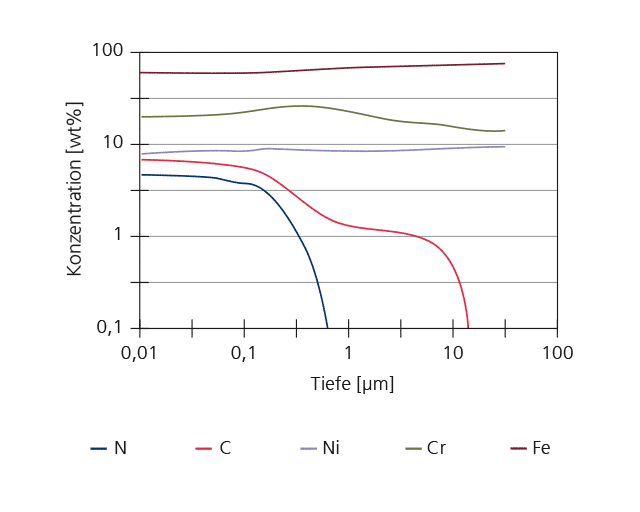
Determine chemical concentration depth profiles of thick layers with glow discharge optical spectroscopy (GDOES)

GDOES instrument from Spectruma.
Glow Discharge Optical Emission Spectroscopy GDOES
Glow Discharge Optical Emission Spectroscopy (GDOES) or optical glow discharge spectroscopy is a technique for determining chemical composition as a function of depth for film thicknesses from a few 100 nm to a few hundred micrometers. In GDOES, an Ar plasma is ignited over the surface of the sample and the material is ablated at a relatively high rate. The ablated atoms are excited and therefore emit light in the visible range, which is measured with a variety of spectrometers and the concentration of the elements is determined.
Areas of application of the optical glow discharge spectroscopy GDOES
Fields of application: Routine examinations of, among others, nitriding, boriding or carburizing coatings, electroplating coatings, spray coatings, inorganic paints.
Advantages:
- Fast removal of even very thick layers within minutes
- Detection limits in the range 0.01%
Limitations:
- Low spatial resolution (5 mm)
- No curved specimens
- Reduced depth resolution due to crater edge effects.
- Calibration effort
